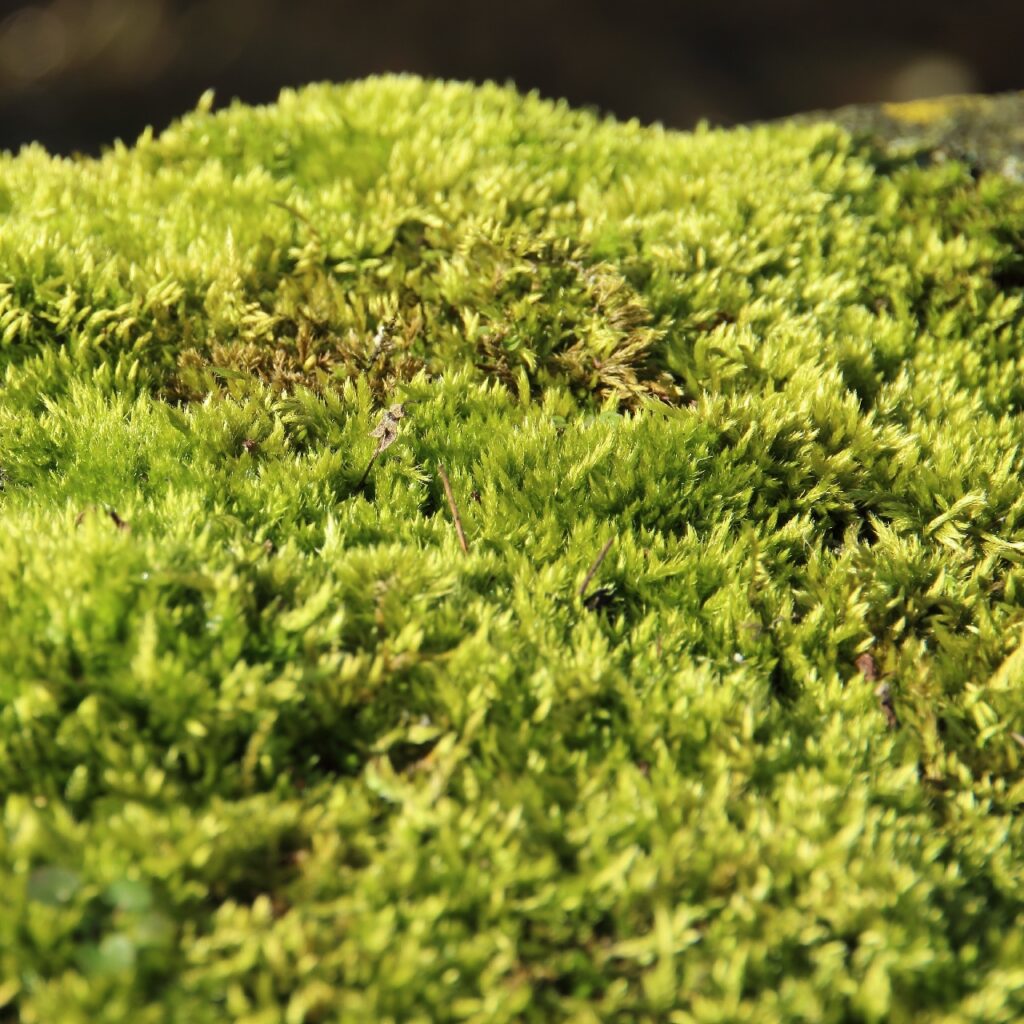Do you want to have a beautiful, year-round moss lawn? With the right mix of a suitable location, adequate preparation, the right moss, proper planting, and diligent upkeep, you can. We did all the research for you!
This article will teach you the best practices to grow a moss lawn. By the end, you should have enough information to create a very unique lawn area.
Table of Contents
Instead of grass, try moss lawns.
Moss lawns are a popular way to save on water, time, and fertilizer. The moss grows quickly and is easy to care for. Moss (Bryophyta) is nature’s carpet, and when the appropriate circumstances are met, it can be a pleasant alternative to the conventional turf.
In order to grow a moss lawn instead of turf grass, your yard will need to meet certain very specific criteria.
- The soil must be acidic
- The soil must be compacted
- There must be part-sun to semi-shade conditions
- There must be constant hydration of some sort.
Types of Moss
There are various types of moss, including clumping acrocarps and spreading pleurocarps.
What is the difference between acrocarps and pleuocarps?
Acrocarpous mosses grow vertically, yield sporophytes at the terminals of main stems, and often have sparse branches. On the other hand, pleurocarpous mosses expand horizontally, generate sporophytes on the sides of their stems, and are more heavily branched.
- Acrocarps, overall, thrive in drier areas and are more drought tolerant. Broom moss (Dicranum scoparium) and heath moss are excellent alternatives for your lawn if you live in a dry environment.
- Pleurocarps are a better choice if you live in a damp, colder environment since they do not perish in excess moisture. They like to remain in the shade, but they can withstand moderate sunshine as well. Species such as hypnum moss and fern moss provide excellent coverage and can withstand cooler, wetter temperatures.
The best part is that moss lawns can be grown nearly everywhere. Moss may grow all year and can be found all over the world. While certain species thrive in specific temperatures, most moss species thrive in hardiness zones 3 to 9.
Choosing moss varieties that are endemic to your area is the best method to install moss as a lawn. You won’t be going against nature because the plants are designed to thrive in the environment where they’re planted, taking less time to establish and much less time to maintain.
Weeding and watering are all that are required after the plants have established themselves.
Pros and Cons of Moss Lawns
Moss lawns are an attractive landscaping choice that will stay stunning all year. Moss thrives in situations that aren’t conducive to typical grass growth, making it an excellent alternative for lawns where the grass is difficult to grow.
Furthermore, moss lawns are low-maintenance, as they don’t require mowing or reseeding to maintain their appearance.
However, moss lawns require specific care to grow. Moss lawns can’t handle a lot of foot traffic, so you might find them hard to keep if you have dogs or children.
If you reside in a drier environment or if drought conditions happen, you may need to water your moss frequently, depending on the specific moss you chose to grow.
Find the Perfect Spot for a Moss Lawn
The quality of your moss lawn is dependent on the area you choose. Sun exposure is an important factor to consider while picking a location.
The majority of moss species prefer locations with low to moderate levels of sunshine. This permits them to keep the moisture they need to survive while still getting the sunlight necessary for photosynthesis.
While certain moss species may thrive in direct sunlight, most mosses will benefit from some shade during the day. If your yard lacks shade, consider growing trees or shrubs in the area to provide the mosses with the necessary shade.
How to Grow a Moss Lawn
The most crucial stage is site preparation. Strip away any plants from the area and rake it to make it smooth and debris-free. The pH of the soil should be about 5.5. If the pH of your soil is too high, use sulfur as instructed to lower it. After you’ve modified the earth, press it down to a firm surface. Then it’s time to start planting.
Harvesting mosses from nature is not advised since they are vital elements of the ecosystem and will take forever to restore in the environment. You can obtain mosses from nurseries or propagate by producing a moss slurry using moss found on your property.
- How to create a moss slurry: Mix some moss, water and beer or buttermilk using a power drill or a blender and then spread this slurry over your prepared area,
The latter approach takes longer to complete, but it has the advantage of letting you choose a native moss from your region to use as a moss lawn substitute. This is advantageous since you already know that moss thrives in your site conditions and is a wild moss, so the plant has a greater chance of surviving.
The Best Time To Plant Moss
You can perform moss transplanting at any time of the year. However, the ideal time to plant moss is in the spring (from late March to mid-June) or fall (September to November), when the weather is typically cooler. This will keep your new moss plants from drying out during the summer heat.
Moss Lawn Maintenance
If you’re not the best gardener, you’re in luck, for moss lawns require relatively little maintenance.
Generally, you should give them a couple of inches of water daily in the morning or evening during hot, dry times, especially during the first five weeks. Observe the margins of the moss as they fill in, as they can dry out rapidly.
It would be best to water your moss lawn every day for the first two months if you planted an acrocarp. Do not water your acrocarp if it rains heavily; excess water in the early stages might drown it.
In contrast, if you’ve planted a pleurocarp, make sure to water it every day. Pleurocarps can withstand more water than acrocarps. Therefore the major concern should be keeping it from drying up.
Make sure you’re not trampling on the moss frequently. It can withstand mild foot traffic, but stairs or stepping stones should be placed in more trafficked locations.
To keep rival plants at bay, weed moss as required. Aside from that, moss lawn maintenance is as easy as it gets, and you can finally put your lawnmower away!
You may see weeds growing on your moss lawn as it matures. Because moss can withstand modest foot movement, you can take care of these weeds by walking out on your moss lawn. The stress of leaping, sprinting, or sliding, on the other hand, is too much for moss to take, so avoid upsetting it with abrupt movements.
A Word of Caution: Children and Dogs
If you’re worried about dogs or children always being around, consider making a section of your yard moss-free. Dog paws will readily rip through the moss, making upkeep more difficult. Kids running through the moss, like dogs, may cause tears and damage, making care more time-intensive.

